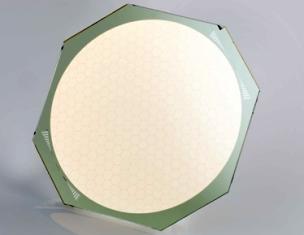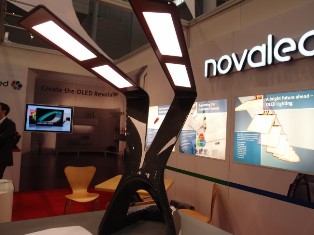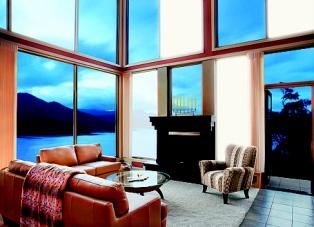Categories: Featured Articles » Interesting electrical news
Number of views: 24610
Comments on the article: 1
OLED technology in lighting
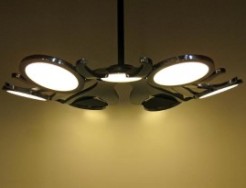 The article discusses the current state of the field of organic LED panels and the prospects for their widespread use for domestic lighting.
The article discusses the current state of the field of organic LED panels and the prospects for their widespread use for domestic lighting.
"The hatch opened, and the walls of the corridor lit up with a soft diffused light." This is a generalized quote from numerous science fiction novels in which authors, emphasizing the unusual atmosphere, describe luminous extended surfaces. And now from fiction to reality: those who wish can make luminous walls for themselves even today, but it will cost a lot and will be extremely inconvenient. We are accustomed to overhead lighting, and the side lights irritate the eyes and disorient the person.
ABOUT inorganic light emitting diodes (LED) we know quite a lot - now you can encounter them at every step. Different situation with organic compound LEDs (OLED): They relatively recently left research laboratories and have not yet received wide distribution.
But the range of possible applications for them is so wide that in the coming years a real revolution awaits us in the field of home lighting and means of displaying information - televisions, monitors, displays of mobile devices.
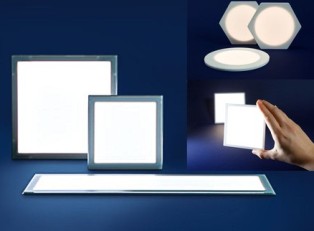
OLED technology in lighting
So why organic LEDs are remarkable and what is their difference from ordinary (LED) products?
The fact is that the manufacture of inorganic LEDs is fraught with serious difficulties: very stringent requirements for the initial purity of semiconductors and the whims of technology. Even now, half a century after the start of industrial production, these difficulties have not been fully overcome. On a modern line for the production of inorganic LED crystals, costing about $ 20 million, the technological process requires about a year of debugging.
Therefore, the optimism of researchers from the Kodak laboratory, who invented in the 80s, was understandable. LEDs on organic materials. It seemed that the problem of getting cheap LEDs was solved. After all, it was precisely this task that the researchers initially set themselves. Moreover, unlike LEDs, which are point sources of radiation, in OLED sources, light is emitted frontally through transparent electrodes. And this opened the way to the creation of flat, large-sized and economical radiating panels.
And then began what is familiar to many technologists: a magnificent discovery, awarded the Nobel Prize, went along a thorny path from a laboratory sample to an industrial product. The first industrial batch of organic LEDs on a mass scale was released in 1997 in Japan at the Tohoku Pioneer factory. A little later, monochrome OLED panels appeared, designed for use in cars.
Table lamp OLED
What is the situation with using OLED for lighting now? For a long time, it was not possible to get organic blue LEDs with an acceptable life, and without this, talking about using OLED in lighting was simply pointless. Fortunately, the efforts of research laboratories and this problem was resolved.
Today, several large lighting corporations produce pilot batches of OLED panels for lighting purposes. An example is OSRAM with the ORBEOS panel family. Philips has launched a line of multi-colored OLED panels. The efficiency of the panels is 20 lm / W, and brightness - 1000 cd / m2.
OLED-panel ORBEOS
Japanese companies are not far behind: Panasonic has been producing since 2010. panels of the "PIOL" type with a size of 100x100mm. In the near future, mass production of products with a size of 150x150mm and 250x250mm is planned. The energy efficiency of PIOL panels is 30 lm / W with a service life of 10,000 hours. Panels are available with a color temperature of 3000 to 5000K with a color rendering index of more than 90.
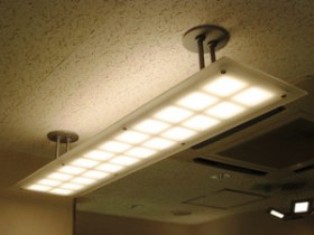
OLEDlamp from Panasonic
The only reason that already does not allow OLED panels to find wide application in domestic lighting today is the extremely high price of products. Novaled Liternity Victory table lamp using four OLED panels, costs only ... 4,500 euros.
Table lamp with OLED Panelsand "Liternity Victory"
But don't be upset. Intensive work is underway to reduce the price of organic LEDs. In 2008, the European program “OLED100.EU” was launched, which provides, in addition to increasing the efficiency of OLED panels to 100 lm / W, a sharp reduction in price to 100 euros per square meter of emitting panels. Of course, the global crisis affected the timing of the project, but there is no reason to doubt its successful implementation in the coming years.
A similar development program for LED lamps has been adopted in the United States. It provides for the phased implementation of solid-state light sources in everyday life. Based on the most pessimistic forecast of efficiency as a light source of 150 lm / W (LED and OLED), by 2018 they will completely displace incandescent lamps, as well as economical fluorescent lamps widely used today.
But the main intrigue is now being created by Chinese manufacturers. Intensive research in the field of OLED and major achievements, which have been repeatedly reported, have not yet resulted in the display of industrial designs of light sources. Given the huge economic and intellectual potential of China, as well as its ability to quickly flood the world with cheap products, a surprise is waiting for us in the near future - the mass production of light sources using OLED technologies at the most affordable price.
Using OLEDpanels for interior lighting
With the advent of available light sources using OLED technology, the interiors of our homes will be completely transformed. Flat and flexible (up to 1 mm thick) luminous panels of various shapes and colors will realize your wildest fantasies in the light design of rooms. Already, designers, using a very limited set of panels available on the market, create unique futuristic projects that science fiction could not even dream of.
See also at bgv.electricianexp.com
:


